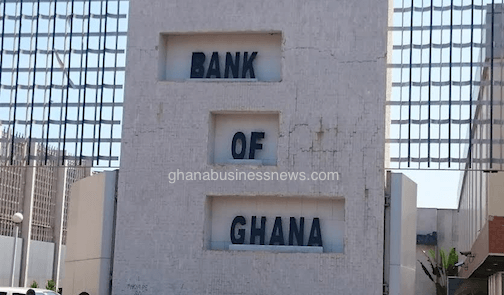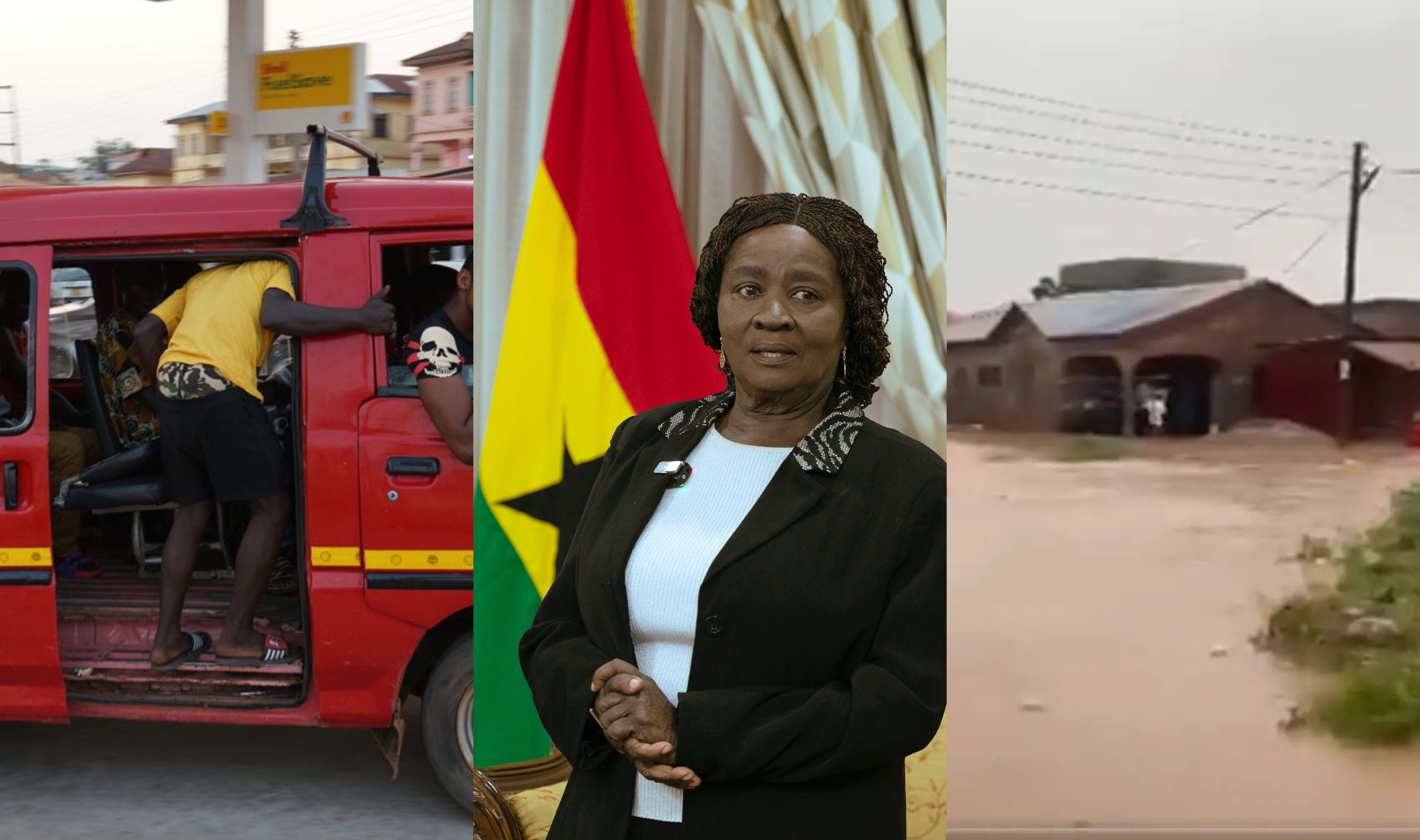
At the 124th Monetary Policy Committee (MPC) meetings held from 21 to 23 May 2025, the Committee, by a unanimous decision, maintained the Monetary Policy Rate (MPR) at 28 percent.
In addition to the policy rate decision, the Bank also announced amendment to the Dynamic Cash Reserve Ratio (CRR), with effect from 5 June 2025. With the amendment, all banks will be required to maintain the CRR in their respective currencies.
This means foreign currency reserves for foreign currency deposits, and domestic currency reserves for domestic currency deposits.
Below is the full policy decision submissions by MPC members
Member 1
Global growth forecasts have softened since the last MPC meeting in March, driven by the heightening uncertainty and the generally challenging economic environment. This development has been underscored primarily by the evolving global trade and economic policy dynamics. The heightened uncertainty and its likely dampening effect on global economic activity, adverse impact on the disinflation process, and in turn financing conditions, especially for emerging market and developing economies, has resulted in a cautious policy stance.
Domestic macroeconomic conditions have generally improved since the last MPC meeting. However, some risks remain and require careful attention. Economic activity has continued to pick up. High frequency measures of economic activity, including the Composite Index of Economic Activity (CIEA) and the Ghana Purchasing Managers’ Index (PMI), as well as improved sentiments from both the
Bank’s business and consumer confidence surveys, point to continuing robust real sector activity. These trends are supporting further closure of the output gap, albeit below potential, and providing disinflationary impulses, which broadly reflect the effects of the stringent monetary policy stance and supportive fiscal re-consolidation anchored on expenditure rationalisation.
Inflation remains a major policy concern. While inflation has declined for the fourth consecutive time, progress has been generallymore sluggish than anticipated under the ECF programme. Recent macroeconomic developments, however, point to a likely strong resumption of the disinflation process in the coming months. This is underpinned by the current monetary policy stance that is working through the system and providing further anchor to the disinflation process. In particular,
- Core inflation, though still high, is declining and inflation expectations have continued to soften.
- Demand pressures are easing, reflected in the slower pace of expansion of the key monetary aggregates and yet-to-close output gap.
- Inflation expectations, captured by consumers, businesses, and financial sector surveys, are easing in line with the broad improvement in the macroeconomic environment, and
- The tighter monetary conditions from both real interest rates and real exchange rate dynamics should firmly support the disinflation process.
The external payments position has continued to improve. The significant increase in the current account balance, largely driven by increased gold exports and robust remittance inflow, has resulted in an accelerated accumulation of international reserves, surpassing programme expectations. This, alongside the current tight monetary policy stance and strong cedi liquidity management,
is contributing to the current stability in the foreign exchange market and should support the disinflation process. While inflation remains above the expected trajectory, recent conditions suggest further downward trends in the outlook as the disinflation process firms up. Under the circumstances, and in commitment to the mandate of price stability, a tight monetary policy stance is required to firmly anchor the disinflation process. In sum, I vote to keep the MPR at 28.0 percent.
MEMBER 2
The global economic environment is fraught with uncertainties regarding the broad shift in US trade policies. This has broadly weakened business and consumer confidence, increased volatility in the financial markets, and stalled the pace of disinflation, with the possibility that major central banks will keep policy rates higher than anticipated. In view of these developments, global financial conditions are likely to remain tight, while the IMF has lowered earlier growth forecasts.
At the 124th Monetary Policy Committee (MPC) meetings held from 21 to 23 May 2025, the Committee, by a unanimous decision, maintained the Monetary Policy Rate (MPR) at 28.0 percent. In addition to the policy rate decision, the Bank also announced amendment to the Dynamic Cash Reserve Ratio (CRR), with effect from 5 June 2025. With the amendment, all banks will be required to maintain the CRR in their respective currencies. This means foreign currency reserves for foreign currency deposits, and domestic currency reserves for domestic currency deposits.
In the domestic context, inflation has declined in the first four months of the year, and projections indicate further declines, supported by the sharp appreciation of the local currency against the major trading currencies. It is worthy to note that the decline in inflation is now broad-based, with contributions from both food and non-food. Since February 2025, food inflation has eased by 3.1 percentage points to 25.0 percent in April 2025, while non-food inflation declined by 0.9 percentage points to 17.9 percent over the same comparative period. This signals some improvements in food supply constraints, which, combined with the tight monetary policy stance will reinforce the disinflation process going forward.
Growth conditions have improved with a pick-up in economic activity, supported by the strong rebound in both business and consumer confidence, underpinned by declining inflation and optimism about improvements in the macroeconomic environment. Private sector credit is also picking up, with prospects of stronger credit extension, as interest rates ease. In particular, the Ghana
Reference Rate, which is the base lending rate, has eased substantially to 23.9 percent in April 2025, from 29.3 percent in December 2024, which signals improvements in credit conditions and provides a boost for real sector activities. These developments suggest a positive outlook for growth.
The external sector has performed creditably on the back of strong export earnings from gold and cocoa, as well as remittance inflows. The country’s international reserves levels have hit an all-time high, enough to cover 4.7 months of import cover of goods and services. The reserve accumulation is largely from domestic sources and provides a strong cushion for the economy against external shocks. With the strong reserve buffers and improved sentiments on the economy, the cedi has recovered sharply in the year to May 2025. Going forward, the tight policy stance, improved market sentiments, and continued compliance with forex rules by market players are expected to sustain the cedi gains.
The banking sector has remained resilient in the first four months of 2025. This is evidenced by strong asset growth and continued improvements in the financial soundness indicators. These aside, asset quality remains a concern, although the non-performing loan ratio has improved marginally since the last MPC meeting. The current high non-performing loan ratio requires adherence to sound risk management practices and implementation of risk mitigating measures within the industry to address the elevated credit risks.
The Bank will also continue to monitor undercapitalised banks to ensure the soundness and stability of the banking sector, going forward.
Given these considerations, I view risks to the inflation and growth outlook as broadly balanced at this MPC round and therefore vote to maintain the MPR at 28.0 percent.
MEMBER 3
Since the March 2025 MPC meeting, the macroeconomic indicators have not shifted much except that the local currency has rebounded strongly against the major trading currencies. Inflation, although showing continued signs of easing, remains at an elevated level. Let me note some of the macroeconomic conditions prevailing at this May MPC round:
- Inflation is easing, but still high above 20.0 percent
- Fiscal policy implementation thus far remains on track
- The current account surpluses have improved further on account of improved terms of trade and remittance inflows
- Rating agencies are examining economic progress as well as steps at completing the external debt exchange, and some are beginning to reassess Ghana’s credit ratings
- The IMF announced a Staff level Agreement with the Government on completion of the 4th Review of the ECF Programme
- Consumer and Business Confidence indices are showing a strong rebound
- Economic activity is still improving
- Banks are extending credit
- Reserve levels remain sufficiently ample at around US$10.7 billion, and
- The exchange rate, cumulatively from the beginning of the year, has appreciated by 24 percent against the U.S. dollar.
While these factors bode well for future inflation outcomes, the economy will require continuation of the emerging turnaround and stability in the macroeconomic indicators to help lock-in gains made so far and move inflation from its elevated levels to within target. At this meeting, I am of the view that the risks to the growth and inflation outlook are balanced. To ensure that these initial gains get locked-in, it will be prudent to observe how all these macroeconomic shifts pass-through to lower inflation. I therefore vote to keep the MPR unchanged at 28.0 percent.
MEMBER 4
The recent U.S. tariff policy changes have raised uncertainty in global trade and economic policies, weakening global growth prospects. While the 90-day tariff truce agreement between the U.S. and China offers some short-term respite, the markets are largely uncertain about what happens next, and this may intensify downside risks to global growth, alongside stalled disinflation in several advanced economies.
Regarding domestic developments, the Bank’s CIEA indicates improvement in economic activities in the first quarter of 2025, compared to the same period last year. Port activities, exports, and cement sales suggested upticks in economic activities, supported by improvement in consumer and business sentiments. These augur well for growth prospects in the outlook.
On the external side, the balance of payments position remains robust, with gold exports bolstering the current account surplus. While exports during the first four months of the year increased by 60.5 percent, imports rose by only 2.7 percent, resulting in a large trade surplus. The strong recovery in the cedi should help the disinflation process in the outlook.
Macro-financial risks are largely contained, although non-performing loans due to lingering effects from the domestic debt restructuring process remain a concern. The credit-to-GDP ratio suggests some potential for credit expansion by banks, alongside robust risk management to address asset quality. The soundness of the banking sector has improved, with improvements in industry metrics, such as solvency, liquidity, and profitability since the last MPC meeting. However, recapitalisation measures are required for some banks to ensure continued resilience of the banking sector.
Headline inflation has declined in the year so far but remains significantly above target. Considering the upside risks to the inflation outlook from utility tariff adjustments, spillovers from the global trade war, and climate-related challenges affecting food harvests, and contrasting these with the downside risks, such as tight monetary policy stance, the appreciation of the cedi, easing ex-pump prices, I believe the risks to the inflation and growth outlook are balanced. However, given that inflation remains well above the target, more needs to be done to break the inertia. I therefore vote to maintain the MPR at 28.0 percent.
MEMBER 5
Staff presentations indicate that global growth prospects have slowed somewhat due to recent U.S. policy changes, resulting in increased trade and economic policy uncertainty. The global disinflation process has mostly halted, with slight upward revision in headline inflation in some countries. Central banks’ policy decisions have diverged, reflecting uncertainties in the inflation outlook.
Financial conditions remain restrictive on the back of high policy rates, high long-term bond yields in advanced economies, volatile equity markets, and high portfolio outflows with potential implications for emerging market and developing economies through the trade and financial channels.
The external sector has remained strong with improved reserve position, representing 4.7 months of import cover for goods and services. The improved performance stemming from robust current account surplus should help sustain the strong performance of the local currency and support the disinflation efforts.
Developments in the real sector point to improved business and consumer confidence. In addition, the PMI signalled an improvement in business conditions, mainly due to increases in output and new orders. The updated CIEA indicated a pick-up in economic activity in the first quarter of 2025, compared to the same period a year ago.
Annual growth in broad money supply moderated in the first four months of the year, largely on account of contraction in the Net Domestic Assets, though the Net Foreign Assets increased. I observe some moderation in the pace of credit growth as banks directed investments towards Bank of Ghana bills. Though this policy action is important for mopping liquidity from the market,the slowdown in private sector credit presents a downside risk to the growth outlook. The financial soundness indicators point to improved performance, although asset quality and capital gaps of some banks require attention in order not to dampen credit extension and the growth outlook.
The fiscal performance in the first quarter suggests some consolidation in tandem with the 2025 budget, and this should bode well for the disinflation process. Looking ahead, the fiscal authority needs to intensify revenue generation and collection efforts to further strengthen the fiscal consolidation drive.
On recent price development, headline inflation has declined consecutively in the year, alongside easing core inflation measures and inflation expectations. With waning inflationary pressures, headline inflation for the next quarter is projected to decline but at a gradual pace. At this MPC round, I observe that overall, risks to both inflation and growth appear balanced and vote to keep the MPR at 28.0 percent. This is important to keep the policy rate tight to anchor a faster disinflation process, which is critical in creating the favourable macro environment to support private sector growth and government’s growth-enhancing initiatives.
MEMBER 6
Since the March 2025 MPC meeting, global economic growth prospects have been downgraded by the IMF in response to the uncertainties generated by the U.S. series of tariff announcements and counter-tariff measures by its major trading partners. The possible impact of the trade war on trade costs could disrupt the disinflation trends globally and dampen demand. Although the recent trade agreement between the US and China has partly eased the tensions, the global growth outlook remains negative. Staff assessed that navigating through the difficult trade-offs could trigger further tightness in global financial conditions with potential play-out on inflation dynamics in the Ghanaian economy.
On the domestic front, the Bank’s high-frequency indicators showed that economic activities picked up in the first quarter of 2025, compared to the same period in 2024. The CIEA and PMI indicated strong growth, and the business and consumer confidence surveys reflected rebound in sentiments, pushing the indices to record levels since April 2018.
The external sector performance demonstrated substantial improvement in the trade surplus, primarily driven by gold exports. The Ghana cedi has gained significantly in the review period, supported by strong reserve accumulation, tight monetary policy stance, and improved macroeconomic conditions. In the outlook, the cedi is expected to sustain the gains cushioned by the significant and still improving reserve buffers, which should bode well for the disinflation process.
Regarding fiscal performance for the first quarter of 2025, data on broad fiscal developments show improvements in fiscal outcomes, which are underpinned by the government’s tighter expenditure controls.
The banking sector remains stable, with the financial soundness indicators pointing to continued improvement. The latest macroprudential risk assessment indicates that broadly, macro-financial risk levels have tapered down, underpinned by easing inflation, cedi appreciation, and substantial reserve accumulation. Despite the marginal improvement in non-performing loan ratio, since the last MPC meeting, the elevated credit risks remain a concern.
Both headline and core inflation have trended down in the year, alongside easing inflation expectations across the various sectors. The latest forecasts point to further declines in inflation in the months ahead. However, I note that the level of inflation remains high relative to the end-2025 target of 12.0 percent, hence the need to keep the rate tighter-for-longer to further re-anchor inflation expectations towards the medium-term target. I therefore vote for the stay of the MPR at 28.0 percent.
The post Monetary Policy Committee of Bank of Ghana publishes full policy decision submissions by members first appeared on 3News.
Read Full Story















Facebook
Twitter
Pinterest
Instagram
Google+
YouTube
LinkedIn
RSS